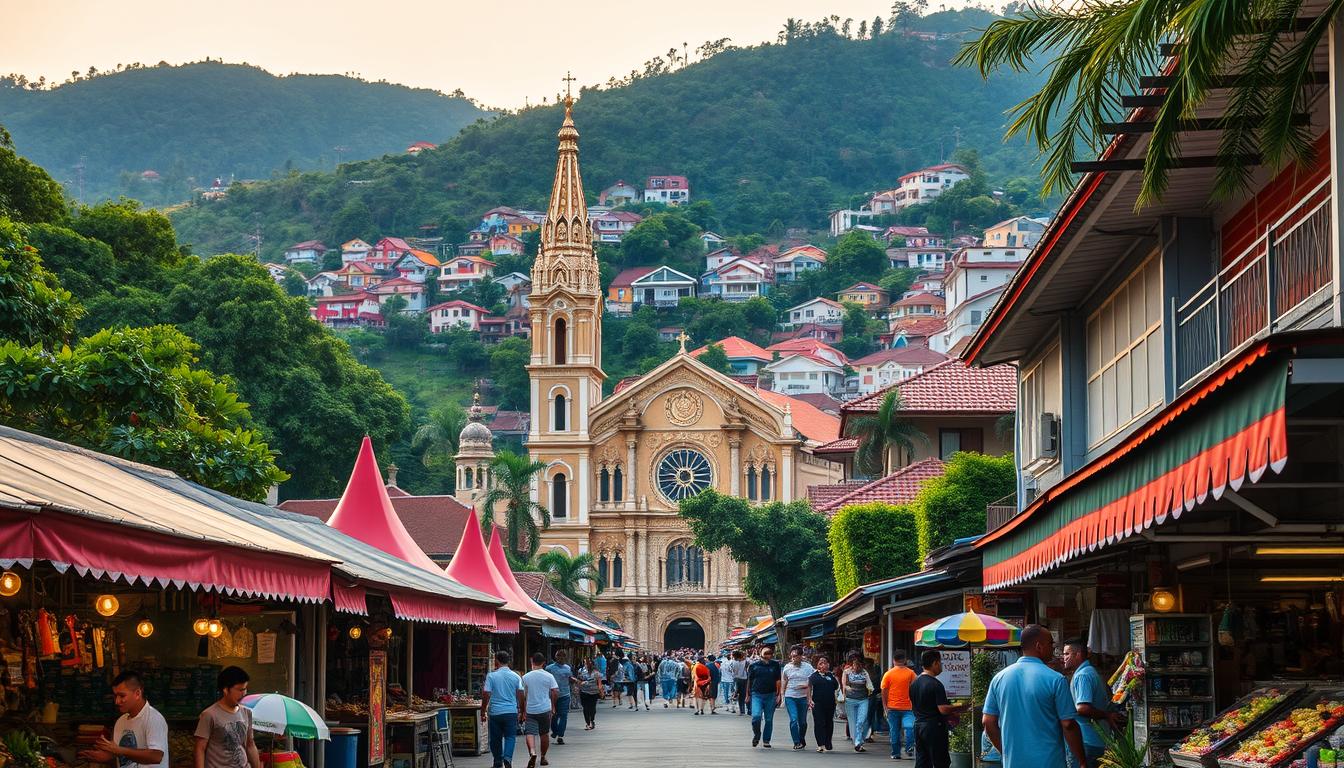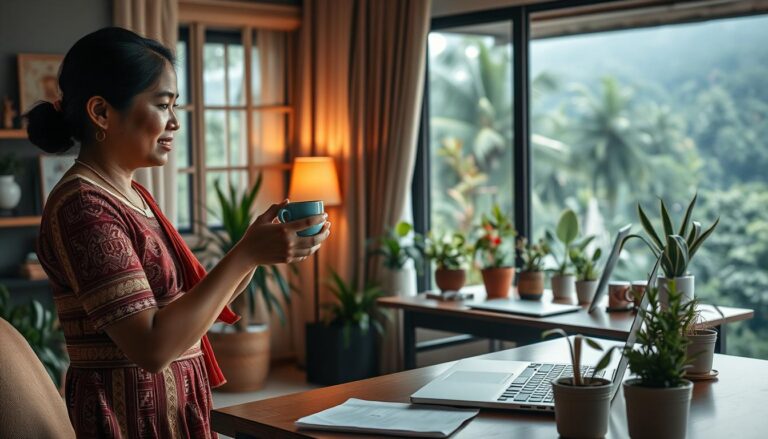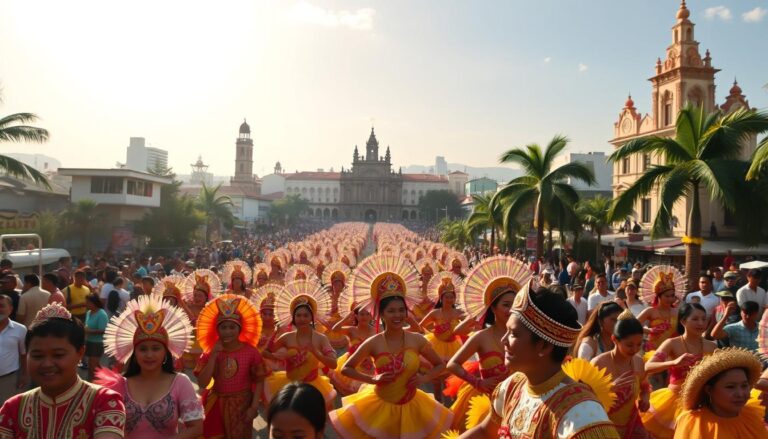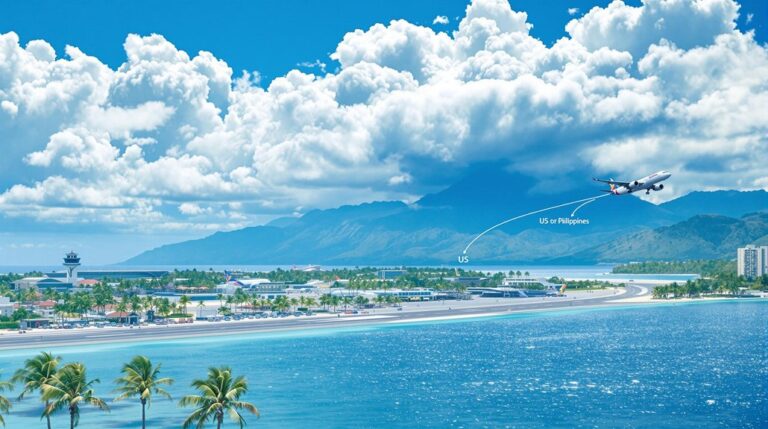How to Choose Festival Towns as a Remote Worker in Philippines

Welcome to your ultimate guide for blending a productive career with unforgettable cultural adventures. Imagine working from a laptop with a view of white sand beaches, then stepping out to join a vibrant street parade. This is the unique opportunity awaiting you in the Philippines.
The Philippines is an archipelago of over 7,640 islands. Each offers distinct scenery and a calendar packed with colorful cultural celebrations. For American professionals, this country is a particularly accessible destination. It is the third-largest English-speaking nation globally.
This guide will show you how to select the perfect places for a “workation.” You can experience authentic Filipino culture through world-famous events like the Sinulog festival. You can also discover smaller, regional gatherings. It’s about more than just a change of scenery. It’s about meaningful community connections.
We will cover practical considerations like internet connectivity and visa options. The new Digital Nomad Visa makes long-term stays easier than ever. Get ready to explore a country where friendly locals and a tropical climate create the ideal environment for digital nomads.
Key Takeaways
- The Philippines offers a unique blend of remote work feasibility and rich, immersive festival culture.
- With over 7,640 islands, the country provides a diverse range of destinations and celebrations.
- Its status as a major English-speaking nation makes it highly accessible for American remote workers.
- Festival towns provide deeper cultural experiences beyond typical tourist attractions.
- A new visa option simplifies long-term stays for professionals seeking this lifestyle.
- Balancing work commitments with festival participation is a key aspect of planning.
- Community connection is a significant advantage of choosing these vibrant locations.
Overview of Remote Work in the Philippines
The landscape of work has fundamentally shifted, opening doors to a new era of location independence. This global phenomenon has transformed remote work from a niche idea into a mainstream career path for many professionals.
Understanding the Rise of Digital Nomads
The Philippines has become a magnet for foreign digital nomads. Several powerful factors drive this trend. The affordable cost of living is a major draw, allowing professionals to stretch their budgets further.
Stunning natural beauty and warm local hospitality create an enviable quality of life. The COVID-19 pandemic accelerated this shift globally. It pushed more people to seek destinations that blend practical work amenities with an enhanced lifestyle.
A key historical connection also makes American remote workers feel especially welcome. From 1898 to 1946, the country was an American territory. This period established English as an official language and forged lasting cultural ties.
Unique Opportunities in an Archipelago Nation
The geography itself presents a unique advantage. As an archipelago of over 7,640 islands, the country offers endless exploration. Digital nomads can easily island-hop while maintaining their careers, discovering new communities and cultures.
For U.S.-based professionals, the time zone is another significant benefit. It allows for flexible scheduling to collaborate with teams on the East Coast, West Coast, or elsewhere. Understanding this rise helps location-independent professionals select the best spots for their needs.
The Allure of Festival Towns for Remote Workers
The vibrant energy of festival towns creates an unparalleled environment for digital nomads seeking community. These destinations offer more than picturesque scenery. They provide authentic cultural immersion that enriches the remote work experience.
Cultural Festivals and Community Spirit
Living in these special places allows digital nomads to participate in legendary celebrations. The Sinulog festival in Cebu each January showcases traditional dances and colorful parades. It draws millions of visitors from across the country.
Baguio’s Panagbenga flower festival celebrates the city’s blooming season with elaborate floats. There’s also a unique Digital Nomad Weekend Festival organized by COCONATVA and BaybayinHub. This event specifically caters to remote workers.
The bayanihan spirit of communal unity becomes especially visible during festivals. Locals eagerly share their traditions, making it easy for nomads to form lasting friendships. This sense of belonging combats the isolation that sometimes affects location-independent professionals.
| Location | Main Festival | Timing | Key Features |
|---|---|---|---|
| Cebu | Sinulog Festival | January | Traditional dances, street parades, colorful costumes |
| Baguio | Panagbenga Festival | February | Flower floats, street dancing, blooming season celebration |
| Baguio | Digital Nomad Weekend | Annual | Networking, community building, remote work focus |
These towns offer the best of both worlds. Peaceful productive periods are punctuated by vibrant cultural celebrations. The natural beauty and warm hospitality create memorable experiences that balance work with meaningful play.
How to Choose Festival Towns as a Remote Worker in Philippines
Your ideal festival destination balances robust infrastructure with authentic local experiences. The right place supports your career while immersing you in vibrant culture.
Start by verifying non-negotiable work essentials. Reliable high-speed internet and good wifi are the backbone of a productive stay. Check for co-working spaces or cafes with a good atmosphere for focused tasks.
Research is your best tool. Look up the local festival calendar before you book your accommodation. Understand the event’s timing and scale. A huge celebration might mean noise and crowded streets, which could disrupt your schedule.
It’s wise to test a town before a long commitment. Book a short initial stay. Connect with other digital nomads online for firsthand insights. This helps you gauge the real-world environment.
Your personal preferences are key. Do you thrive in big cities like Cebu with multiple events? Or do you prefer the charm of smaller towns? The best destination aligns with your interests and work style, creating a truly unique experience for any remote workers.
Why the Philippines is a Top Destination for Digital Nomads
Digital nomads find the Philippines particularly appealing due to its unique blend of natural wonders and practical advantages. This country offers an exceptional experience for location-independent professionals.
Natural Beauty and Affordable Living
The archipelago boasts spectacular scenery that captivates every visitor. Pristine white sand beaches and crystal-clear waters create perfect work environments. Lush forests and volcanic mountains provide endless exploration opportunities.
While not the cheapest in Southeast Asia, the Philippines offers excellent value. Smaller festival towns provide affordable living without sacrificing quality. This makes it a smart destination digital nomads can enjoy comfortably.
Monthly expenses for nomads philippines typically break down as follows:
| Expense Category | Cost Range | Details |
|---|---|---|
| Accommodation | $200-600 | Comfortable apartments in festival towns |
| Food & Dining | $200-400 | Mix of local and Western meals |
| Transportation | Very affordable | Jeepneys, tricycles, ride-sharing |
| Entertainment | Reasonable | Local activities and exploration |
English Proficiency and Friendly Locals
As the third-largest English-speaking country globally, communication barriers disappear. This advantage sets the Philippines apart from other Southeast Asia destinations. Work collaborations and daily interactions flow smoothly.
Filipino people take genuine pride in their hospitality. Their warmth creates an inviting atmosphere for digital nomads. This friendliness shines brightest in community-oriented festival towns.
The combination of natural beauty, affordability, and welcoming culture creates an unbeatable package. It’s why many consider this their top destination digital nomads should experience.
Must-Have Amenities and Infrastructure in Festival Towns
The foundation of any successful remote work experience in cultural hotspots begins with reliable amenities. Your ability to meet deadlines depends on consistent infrastructure.
A stable internet connection tops the priority list. The Philippines faces challenges with inconsistent wifi, especially outside urban centers. Research your chosen destination thoroughly before booking accommodation.
Ask providers for recent speed test results. Check if they offer fiber-optic high-speed internet. Many quality accommodations now feature Starlink satellite service for enhanced reliability.
Co-working spaces provide excellent backup options. These dedicated work spaces typically invest in premium internet infrastructure. They offer productive environments when your lodging’s wifi falters.
Beyond connectivity, consider proximity to essential services. Quality restaurants, grocery stores, and healthcare facilities matter. The surrounding area should support both work and lifestyle needs.
Local restaurants and cafes with good wifi become valuable extensions of your workspace. Always have a mobile hotspot as backup. This ensures you never miss important deadlines.
Visa Options and Regulations for Remote Workers
The legal framework for remote professionals has recently undergone a significant transformation. Exciting news arrived in April 2025 with the official approval of the Philippines digital nomad visa. This new program allows qualified individuals to live and work legally for up to two years.

This specialized nomad visa is designed for those working remotely using digital technology. Applicants must meet specific requirements, including a valid passport and employment with clients outside the country. Proof of sufficient income and international health insurance are also mandatory.
Traditional Visas Versus the Upcoming Digital Nomad Visa
Before this development, digital nomad travelers relied on other options. Many visitors enjoy a 30-day tourist visa waiver upon arrival. For longer stays, the Special Tourist Visa permits multiple entries for up to 365 days.
The new nomad visa offers clear advantages over traditional paths. It provides longer validity and eliminates the need for frequent border runs. The table below highlights key differences between these visa options.
| Visa Type | Maximum Stay | Key Requirements |
|---|---|---|
| Visa Waiver | 30 days | Passport from eligible country |
| Special Tourist Visa | 365 days | Extensions and border runs |
| Non-Immigrant O Visa | 3+ months | Stable income, health insurance |
| Digital Nomad Visa | 24 months | Remote work, income threshold |
While the government finalizes application details, monitoring official sources is wise. This nomad visa represents a major step forward for location-independent professionals seeking extended stays.
Navigating Reliable Internet and Tech Requirements
The single most important consideration for a productive stay is ensuring your digital infrastructure is rock-solid. Connectivity can be the biggest hurdle outside major urban centers.
Proactive research is your best defense. Before booking accommodation, request recent speed tests from hosts. Ask about the connection type—fiber is ideal. Scour reviews for specific mentions of wifi reliability.
Major providers like PLDT, Globe, and Converge ICT are expanding fiber coverage. This gradually improves the landscape. For a game-changing solution, Starlink has entered the market.
It brings reliable high-speed internet to previously challenging areas. Premium co-working spaces often leverage this technology.
For example, Cocospace in Siargao offers Starlink, ergonomic chairs, and call booths. This demonstrates the rapid improvement in remote work infrastructure.
Always have a backup plan. A mobile hotspot with an unlimited data plan is essential. Know the location of nearby cafes with good wifi for emergencies.
Understand your needs. Video-heavy roles require stable 10+ Mbps upload speeds. Simpler tasks can manage with more modest internet.
Maximize your connection by scheduling large downloads for off-peak hours. Use offline modes when possible. With planning, you can thrive in any festive area.
Exploring the Top Festival Towns and Digital Nomad Hubs
The Philippines offers a diverse array of destinations, each with a unique character perfect for different types of digital nomads. From bustling cities to serene beaches, you can find a destination that matches your work style and wanderlust.
Beach and Island Paradises
For those drawn to the coast, several islands stand out. Siargao Island is a surfing capital with a laid-back vibe, ideal for adventurous nomads. Its famous Cloud 9 break is a major draw.
Palawan boasts stunning natural wonders like the Underground River. El Nido provides a peaceful area with reliable wifi. Boracay is known for its luxurious beaches and vibrant social scene.
Urban Centers and Mountain Retreats
Manila and Cebu are the primary urban hubs. These cities offer the fastest internet and abundant co-working places. Cebu is also home to the massive Sinulog festival.
For a cooler climate, head to Baguio. This mountain city hosts the Panagbenga flower festival and a special Digital Nomad Weekend. It’s perfect for those who love hiking and stunning views.
Utilizing Co-working Spaces and Community Networks
Co-working spaces provide more than just a desk; they are vital hubs for connection and professional growth. These environments offer reliable infrastructure and a built-in community for digital nomads.
They combat isolation by creating a structured work day. This separates professional time from leisure in exciting festival locations.
Popular Co-working Spots in Metro and Regional Areas
Major cities boast premium options. In Metro Manila, spaces like WeWork in Makati and CommonGround in BGC offer high-speed wifi and wellness programs.
Cebu is another hotspot. The Company Cebu and KMC Skyrise provide modern amenities. Enspace Cebu features panoramic city views.
Regional destinations are also excellent. Calle Uno in Baguio operates from a repurposed heritage house. Cocospace in Siargao even has a swimming pool and Starlink internet.
Building Your Local Digital Nomad Network
Actively engaging is the best way to build your network. Attend events hosted by your co-working space.
Join online groups like “Digital Nomad Philippines” or “Cebu Digital Nomads.” These platforms help nomads connect before arriving.
Shared cultural experiences, like attending local festivals together, forge strong bonds. This creates a supportive network for digital nomads far from home.
Balancing Work and Play in a Tropical Setting
Finding the perfect rhythm between professional duties and tropical adventures is the ultimate goal for any location-independent professional. The challenge lies in staying productive when stunning beach views and cultural celebrations beckon.

Establish clear boundaries from day one. Designate a specific work place, even if it’s just a corner of your accommodation. Communicate your availability to both clients and new friends.
Workation Strategies for Productivity
Structure your day using techniques like time-blocking. Dedicate morning hours to focused work before the heat peaks. Save afternoons for exploration.
During festival time, plan lighter workloads. Front-load tasks before big events. This approach lets you enjoy celebrations guilt-free.
| Strategy | Work Focus | Play Integration |
|---|---|---|
| Time Blocking | 4-hour morning sessions | Afternoon beach visits |
| Reward Scheduling | Complete project milestone | Festival participation reward |
| Flexible Weeks | Heavy work pre-festival | Light duties during events |
Experiencing Local Festivals and Cultural Excursions
Use cultural things as motivation. Complete your tasks knowing a vibrant street parade awaits. Many nomads find this “reward system” highly effective.
Go beyond spectating. Join cooking classes or volunteer with festival organizers. Explore waterfalls near Cebu or rice terraces around Baguio.
The most successful digital nomads don’t fight the distractions—they schedule around them.
Embrace flexibility. Some days will be highly productive. Others will be immersion days. The beauty is having freedom to balance both.
Safety, Connectivity, and Travel Considerations
Navigating safety concerns shouldn’t deter you from experiencing the rich cultural tapestry of these incredible locations. While horror stories exist, most are exaggerated. With reasonable precautions, nomads can enjoy safe, fulfilling experiences.
Follow these practical tips for security. Avoid late-night solo outings and stay alert in crowded areas. Steer clear of known high-crime districts. Trust your instincts about people and situations.
Davao stands out as an exceptionally safe destination. It ranks second in Southeast Asia for security. This makes it ideal for solo travelers or those new to the region.
Natural considerations matter too. Typhoon season runs from July to October. Storms can cause flash floods and disrupt travel plans. Have backup power and offline work capabilities ready.
Reliable wifi and internet are safety essentials. Carry multiple SIM cards and charged power banks. Know where to access emergency wifi when moving between islands.
Register with your embassy for extended stays. Keep emergency contacts accessible. Build a network of local friends who know your whereabouts.
With these preparations, you can work remotely confidently. Millions of visitors enjoy incident-free experiences each year. Proper planning lets you focus on cultural immersion.
Budgeting Your Workation: Costs and Accommodation Tips
Smart financial planning transforms your workation from a dream into a sustainable reality. Knowing your expenses helps you select the perfect destination for your lifestyle.
Affordable Housing and Living Expenses
Your monthly budget varies significantly by location. Premium urban areas like BGC and Makati command $500-1,500 for comfortable accommodation. More affordable places like Cebu offer quality apartments for $300-600.
Smaller cities provide excellent value. Davao rentals range from $200-400 monthly. Baguio offers the most budget-friendly options at $175-350. These accommodations often include basic utilities.
Additional monthly costs include utilities and internet ($50-100). Groceries average $90-200. Local restaurants serve delicious meals for just $3-6. This affordable living allows for comfortable extended stays.
| City Type | Monthly Rent | Utility Costs | Food Budget |
|---|---|---|---|
| Premium Urban (BGC/Makati) | $500-1,500 | $70-120 | $250-400 |
| Mid-Range (Cebu) | $300-600 | $50-100 | $200-350 |
| Budget-Friendly (Davao/Baguio) | $175-400 | $40-80 | $150-250 |
For stays over three months, negotiate directly with property owners. Choose accommodation slightly away from main festival areas for better rates. This approach maximizes your cultural experiences while maintaining financial comfort.
Inspiration and Resources from Digital Nomad Communities
Learning from those who’ve already walked the path can transform your remote work experience from daunting to delightful. These digital nomad networks provide real-world insights that make settling into new places much smoother.
YouTube Vlogs and Social Media Insights
Popular creators offer authentic glimpses into the nomad lifestyle. Dany’s Philippines Travel Series with nearly 300,000 subscribers tours destinations from Cebu to Boracay. Jo Dee shares her digital nomad life in Siargao, covering cost of living and local culture.
Beer for Breakfast creates well-curated guides about Boracay and Palawan. Millennial Legends documents their journey after leaving the USA. Daneger and Stacey cover diverse locations from El Nido to BGC.
Online Communities and Networking Groups
Facebook groups like Digital Nomad Philippines provide general support. Cebu Digital Nomads offers location-specific advice. DNEBC PH focuses on beach club community and business opportunities.
Reddit’s r/digitalnomad features balanced discussions about benefits and challenges. These platforms help nomads connect before arriving. They share practical tips about local things and infrastructure.
Engaging with these digital nomads communities transforms solo work into supported adventures. The nomads philippines network makes every transition smoother.
Conclusion
As the sun sets on our exploration of Philippine festival towns, the path forward for aspiring digital nomads becomes clear. This country offers an incredible blend of professional opportunity and cultural richness that few other destinations can match.
Finding your perfect spot requires balancing practical needs like reliable wifi and comfortable accommodation with personal preferences. Whether you prefer bustling cities, serene beaches, or tranquil mountain areas, there’s a perfect match among the thousands of islands.
The new visa program makes it easier than ever to work remotely here long-term. While requirements exist, proper planning ensures a smooth transition. Thousands of nomads have successfully built fulfilling lives here.
Your adventure awaits. Take the leap and discover how remote work can blend seamlessly with cultural celebration. Each day brings new opportunities for connection and growth in this welcoming Southeast Asian paradise.






